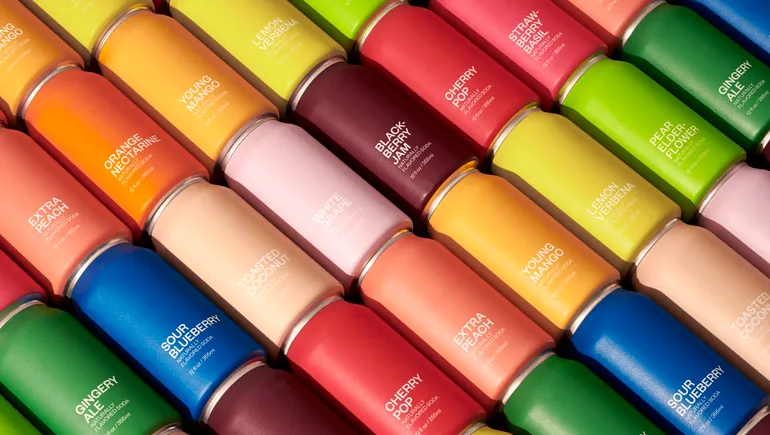United Sodas of America’s fight to invigorate an unloved category

For an upstart soda brand, United Sodas of America isn’t afraid to tussle with bigger, more established competitors.
The beverage, which launched during the early days of the COVID-19 pandemic, has caught on with consumers and distinguished itself from competitors with its clean label, low-calorie total and proprietary sugar and stevia blend — a sweetener combination company president Dan Herndon described as the brand’s “secret sauce.”
The beverage also uses packaging to its advantage. Each soda variety has its own unique color, with the only text adorning each label being the flavor name, size of the can and “naturally flavored soda.”
”We punch way above our weight class” compared to established brands such as Coca-Cola and Pepsi as well as newer entrants like probiotic soda Poppi, declared Herndon.
United Sodas’ effort to reinvigorate the beverage category faces an uphill battle. After peaking in the late 1990s, IBISWorld said per capita soft drink consumption has fallen since as health concerns and higher prices deter consumers from drinking soda. This year, soft drink consumption is forecast at 42.8 gallons per person, according to the analytics firm.
The privately held United Sodas won’t disclose its financial data in detail, but Herndon said it posted “excellent growth” in 2023. It is forecasting a “minimum” of 60% growth this year as it prioritizes getting more of its cherry pop, sour blueberry and mango into additional wholesale, supermarkets and natural channels. Currently, United Sodas is carried in 2,500 stores across the country.
Herdon said the company has no plans to stray from its core into other beverage offerings.
United Sodas said some retailers have been clamoring for it to enter new markets and channels. It’s dabbled in a handful of locations such as convenience stores, college campuses and restaurants, but it’s been very “selective” about who it works with.
“We need to find good partners who want to build a solid business with us, not just grab the next hot thing,” Herdon said. “The word is definitely out right now that we’ve got a great product. It’s a cool product, tastes great. We want you. But we need to be smart and selective about where that goes.”
Herdon acknowledged that United Sodas has turned down some business because it wasn’t a good fit at that moment.
Kate Reeder, United Sodas’ chief operating officer, said the beverage’s birth during the pandemic taught executives about “being mindful with how they spend their time, energy and financial resources.”
A huge part of the company’s early strategy was inundating the market with a variety of flavors, she said. When United Sodas hit the market in May 2020, it debuted a dozen offerings.
Reeder said the brand believes Americans still love soda, but the needs of consumers are changing and most sodas don’t fill their interest in healthier beverages. United Sodas thinks it can fill that void. To make an immediate impact in the market and have consumers “buy into our vision of what soda could be,” she said United Sodas needed more than just one or two flavors when it launched.
Reeder said the brand rests on the foundation that Americans still love soda, but that many didn’t have one that fit their changing needs. To make an immediate impact in the market and have consumers “buy into our vision of what soda could be,” she said United Sodas needed more than just one or two flavors when it launched.
“Coke and Pepsi have played a role in culture for decades,” she said. “For us, to be the next iconic soda brand, we had to come out with the same gravitas so that people would see that even though we were a startup.”
Source: fooddive.com

